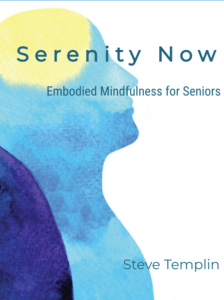The research showing that most chronic pain is generated in the brain suggests to some, if not many people, that the pain isn’t real but imagined. The idea that one’s suffering is imagined is insulting, yet that’s not what the research is suggesting.
It’s been assumed for a long time that pain that’s felt in the body is coming from the body. Medical professionals have become highly skilled at looking for and finding problems in the body that are responsible for pain. And then those bodily parts can be treated appropriately.
Where this ‘pain comes from the body’ assumption breaks down is when the pain is chronic, meaning that it’s lingered for three months, long after injured body parts have healed.
When you hit your thumb with a hammer and your thumb hurts, the pain is mediated by the brain but is coming from your thumb. That’s why putting ice or an analgesic on your thumb is the thing to do.
However, your injured thumb should heal within weeks, or at least by the three month marker. Then, any pain you feel in your thumb IS NOT COMING from your thumb. It’s coming from memorized pain pathways in your brain.
Applying this same brain pain concept to low back pain can be more challenging, because we KNOW that the pain we feel when leaning over to put on a sock is coming from the back. Surprisingly, if the pain is chronic it’s most likely coming from the brain.
If this is the case, you should be treating your brain rather than your back. But how many chronic back pain sufferers do that?
But then you say, I have a bad disc. And the research says that bad discs are like grey hair. If you’re over thirty you likely have disc degeneration, but discs are only responsible for roughly 5% of back pain.
What’s responsible for the other 95 percent? The pain comes from pathways in the brain that have become chronically activated, akin to a stuck warning light on your dashboard. The warning signal is there but it’s faulty. The signal is faulty, not your body.
This is really important because if you can stop worrying or being overly concerned about your body there’s a better chance that your brain’s pain pathways will quiet down, or become silent.
In another post I’ll talk more about what we can do to resolve brain-induced pain, the most common form of chronic pain.
Here, we’ll look at other personal qualities, in addition to being highly sensitive, that contribute to brain-induced pain.
What Personal Traits Contribute to Brain-induced Pain?
Certain personality traits, in addition to being a highly sensitive person, tend to be associated with individuals prone to brain-induced pain. This type of pain and related brain-induced ailments can be referred to as MindBody Syndromes.
Individuals who put a lot of pressure on themselves are more vulnerable to chronic pain, because the pressure fuels the same brain pathways that generate pain. This would include people who tend to be perfectionists and those who are overly self-critical and hard on themselves. Also, in this group are those who are overly responsible or overly conscientious.
Those with a sensitivity to other’s emotional states, like a high degree of empathy or compassion, are also at a greater risk of developing brain-induced pain. Included in this group are those whose care for others occurs at their own expense.
Those with a need to minimize conflict or criticism tend to be vulnerable as well. The need for approval, or a tendency towards people pleasing fits into this category.
Perhaps the most common trait among those with brain-induced pain is the tendency to be a worrier, fearful, or anxious. These states reflect the sympathetic side of the autonomic nervous system (ANS) that’s responsible for the fight or flight response. This is the arm of the ANS that fuels the brain pain pathways.
Another factor contributing to brain pain is a lack of emotional awareness. Those who have difficulty feeling their feelings or verbally describing what they feel are also at greater risk. This characteristic can also lead to a build up of stored emotions like grief, sadness, fear, or anger that fuel the pain pathways. The pioneer in this brain pain field was Dr. John Sarno, who said that in his experience the most common buried emotion that generates chronic pain was rage.
I’ll finish this section with common experiences that are experienced by many HSPs. If you’ve felt that you didn’t fit in, were teased or ridiculed for being different, or called ´too sensitive´ you’re also at greater risk for brain-induced pain and other related MindBody Syndromes. When we’re judged, or excluded our nervous system can respond to that unpleasant experience as a form of potential threat and threat fuels the brain pain pathways.
In the next post I’ll cover the studies that supports the notion of brain-induced chronic pain.


 Steve is a retired Doctor of Oriental Medicine, Acupuncture Physician, and HeartMath Trauma-Sensitive Certified Practitioner with over 35 years of clinical experience in the fields of Energy Medicine, Energy Psychology, and Biofeedback.
Steve is a retired Doctor of Oriental Medicine, Acupuncture Physician, and HeartMath Trauma-Sensitive Certified Practitioner with over 35 years of clinical experience in the fields of Energy Medicine, Energy Psychology, and Biofeedback. 